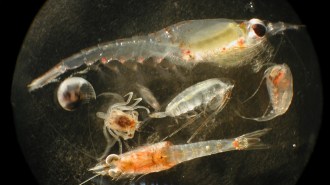Analyses of soil from central Missouri have pinpointed just when North America’s most recent spate of ice ages began: 2.4 million years ago.
When the high-energy, extraterrestrial particles known as cosmic rays strike crystals of quartz, they often produce radioactive atoms of beryllium and aluminum. Therefore, the presence of beryllium-10 and aluminum-26 is a sign that the quartz has spent time near Earth’s surface, says Charles W. Rovey II, a geologist at Southwest Missouri State University in Springfield. If that material is later covered with deep layers of sediment that protect it from new cosmic ray bombardments, the slow decay of those radioactive isotopes serves as a ticking clock that can reveal when the material was buried.
Rovey and his colleagues analyzed a sample of soil from deep in a clay pit near Danville, about 110 kilometers west of St. Louis. The ratio of beryllium-10 and aluminum-26 in that sample indicates that the 7.5-meter-thick layer of glacial debris atop the soil layer was deposited about 2.4 million years ago. This is the most direct evidence yet for the start of the ice age. Previously, scientists only had inferred, from isotopes in marine sediments, that large-scale glaciation in North America occurred at that time. The researchers report their findings in the Jan. 14 Science.







